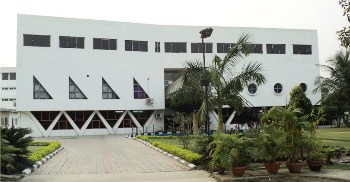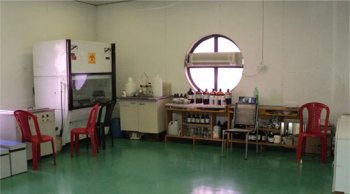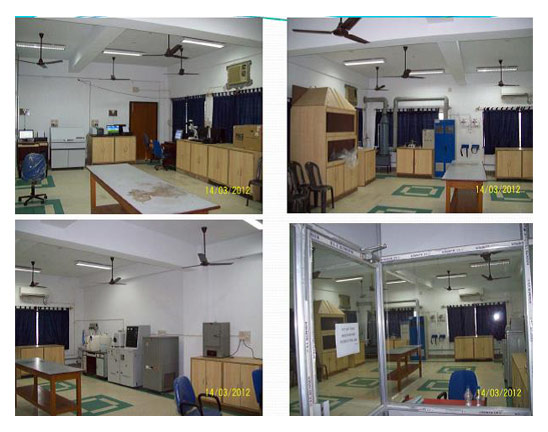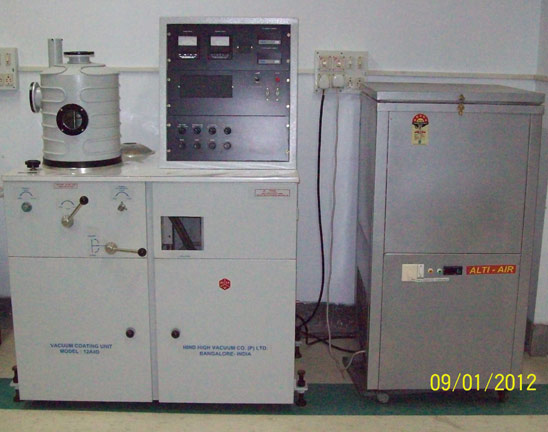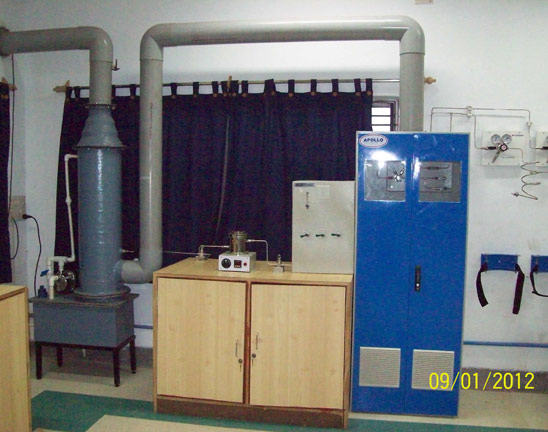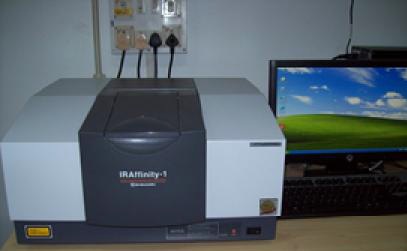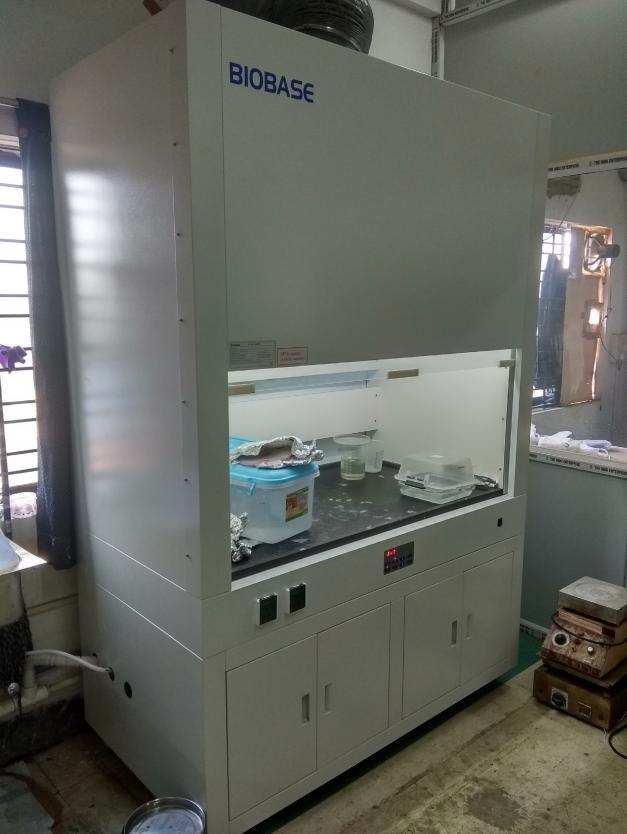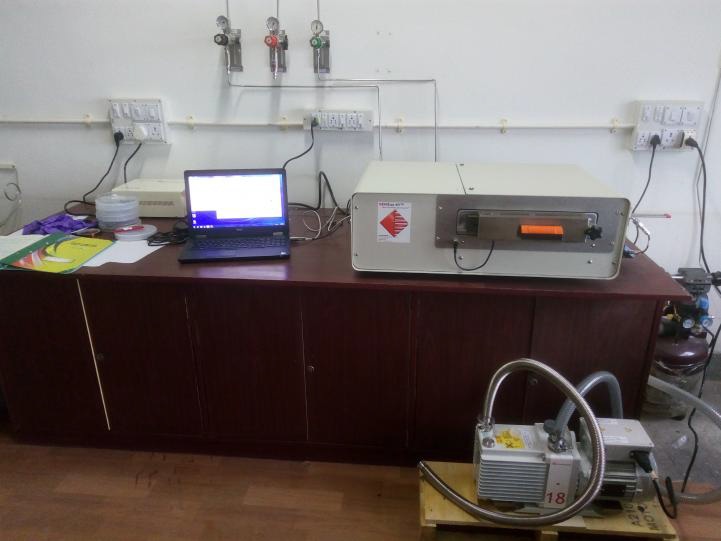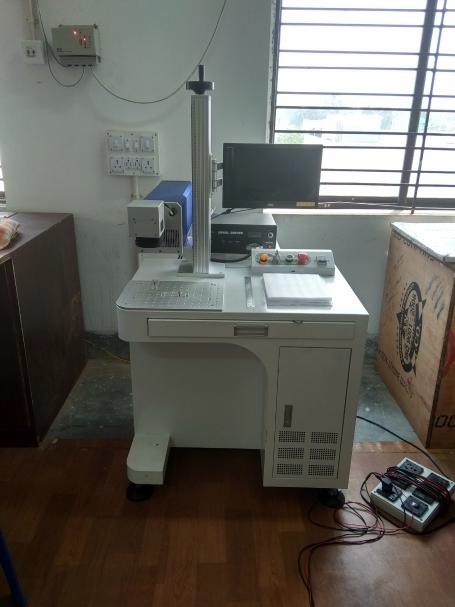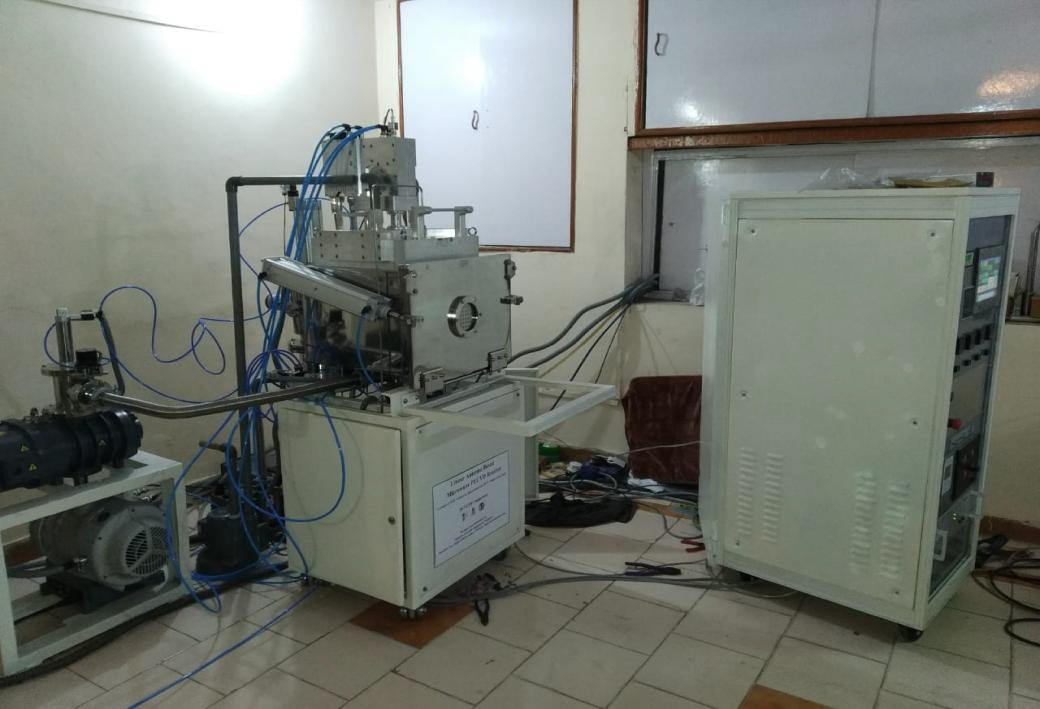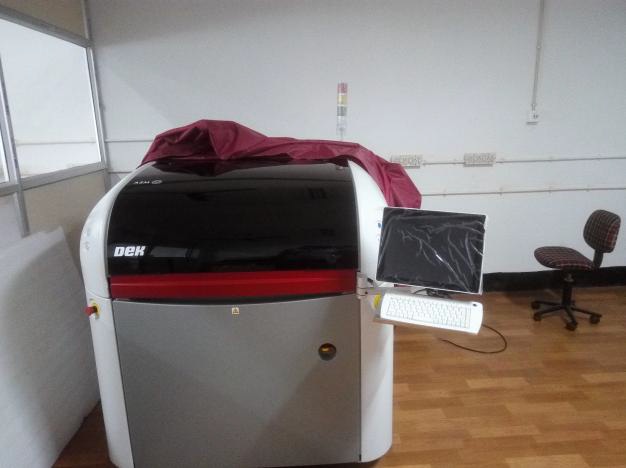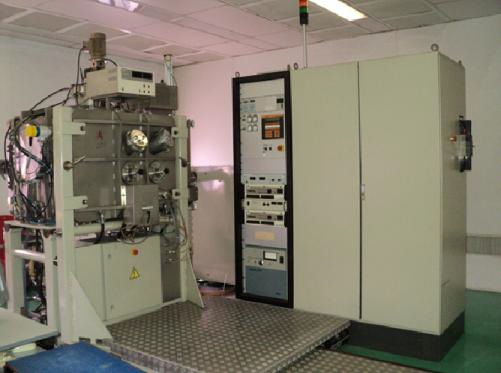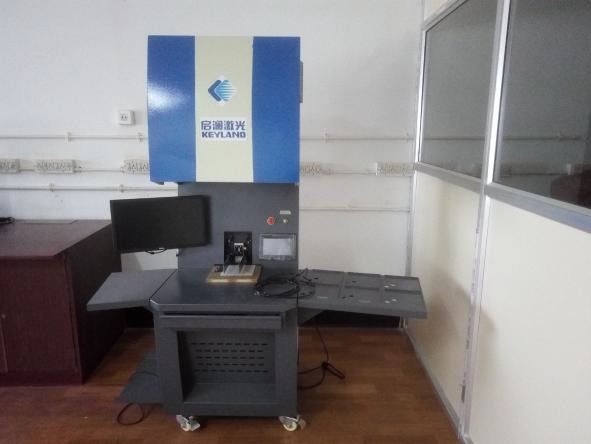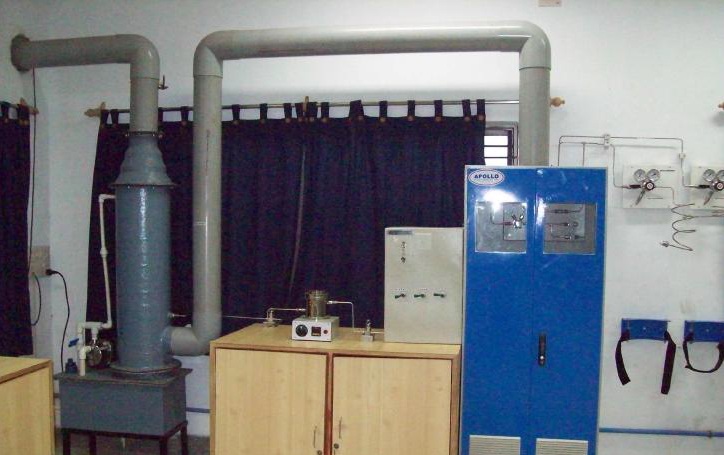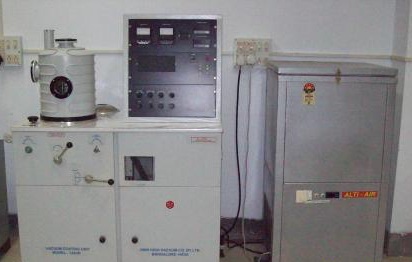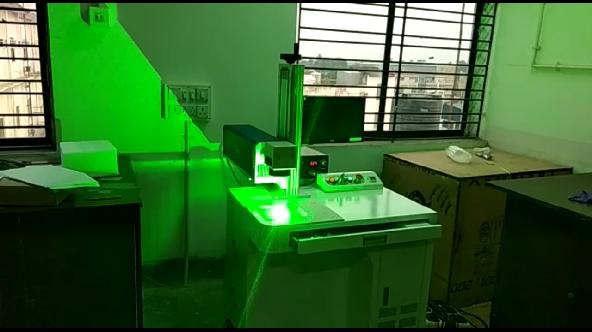
About
A research excellence center is a characteristic granted to an academic institute unit of a quality tangible research achievement that adds a higher status to the academic institute compared to its counterparts.
A research excellent center usually has a nucleus that starts a specialization or a scientific field that distinguishes the institute through the specialized teaching staff who are active and interested in the field. A center usually comprises more than one specialization, depending on what is called interdisciplinary specializations. A center gains prominence in a certain field and has applications whether in industry, commerce or practical life in general.
Establishing excellence centers at colleges under universities usually starts with setting up what is called Collaborative Research Centers that begins with an initiative by a number of the teaching staff and researchers at Institute hoping that they may transfer into an excellence center later in case of fulfilling its conditions and requirements. Collaborative Research Centers are viewed as promising excellence centers that need a certain period of time to develop and transfer into reliable research excellence centers. Most important of its requirements are as follows:
a) Interdisciplinary research programs.
b) A good list of scientific research products.
c) Research relations with other research centers or distinguished researchers.

Vision of the Center
To introduce, practice and expand a sensible comprehensive strategy of nanotechnology & photo-voltaic education and research through differentphases to improve quality of research & development activities in the area of solar Photo-voltaic Research, Diamond like nano-composite (DLN) coating and Sensors system.
To ensure the application of DLN film coating in different emerging areas. Another important vision is to develop indigenous technology in the area of high efficiency crystalline solar cell , different types of sensors and Grid Connected Solar Photo-voltaic based Micro grid.
To start a new PG program (M.Tech level) to educate the student in the area of renewable energy for solving the power requirement with easily available renewable energy sources in our country.
Mission of the Center
In conformity with our vision, our R & D laboratory will take up the following mission :
To contribute to the development of highly qualified and innovative personal through specialize training and knowledge build up in the area of solar photo-voltaic technology, nanotechnology and sensors.
To conduct cutting-edge research as a front-line R & D incubator through a multi-disciplinary approach in the field of solar photo-voltaic technology,micro-greed , nanotechnology and sensors.
To strategize the industry interactive research and collaborative activities and lead by innovation in the field of solar photovoltaic technology nanotechnology & sensors with the aim of transmission of the research /innovation output into the industrial domain.
The Sponsored research laboratory and DLN nano-tech center will emphasize on R & D, doctoral and post doctoral research apart from sponsored research and consultancy work for resource generation.
The M.Tech level program will impart basic knowledge of renewable Energy resources for the benefit of society.

Available Infrastructure:
|
Equipment available |
Generic name of equipment |
|
DLN Nanotech Laboratory, Salt Lake, MSIT, TIG |
i) 1500sq.ft clean room (Class 1000) ii) Entry Air shower iii) One Clean laminar work station iv) One pin-on-disc wear & coefficient of friction measurement unit v) One Ultrasonic cleaner vi) One semi-industrial PACVD unit with remote computer interface vii) One water chiller |
|
Meghnad Saha Institute of Technology, Nazirabad. |
1. Chemical Bench 2. Weighing balance 3. Magnetic stirrer cum hot plate 4. Hot air oven (3000C) 5. De-ionize water system 6. Vacuum coating unit 7. Sensor measurement set up with scrubber 8. LCR meter (Agilent) 9. Optical Microscope with camera attachment(OPTIKA, Italy) 10. UV-VIS-NIR Spectrophotometer with variable angle attachment(Simadzu, Japan) 11. FTIR with ATR acility(Simadzu, Japan) 12. Rapid thermal annealing system (10000C) 13. ALD 14. Minority Carier Life Time Tester (Sinton ) 15. Solar Simulator (1 Sun) 16. Screen Printer 17. Spin Coater 18. Green LASER |
Research Infrastructure Images
|
|
|
|
|
|
|
|
|
|
|
|
|
|
|
|
|
|
|
|
|
|
|
|
|
|

Professional Biography of Prof.(Dr.) Utpal Gangopadhyay
Prof.(Dr.) Utpal Gangopadhyay received his Master of Science (Physics) degrees from Kalyani University, Nadia, West Bengal, India in 1981. He received his Ph.D degree in “Solar Photovoltaic” also from Kalyani University, India in May 1989. He is around 28years research experience in the field of Mono & Multi-crystalline Silicon Solar Cells and Semiconductor related Device like V-Groove MOSEFT, a-Si : H TFT, Silicon /porous silicon related Microsensors.. He worked as a Research Professor in the School of Electrical and Computer Engineering, Sungkyunkwan University, South Korea in the year 2001-2002 and a Research Scientists in Photon Semiconductor & Energy Limited Company, South Korea in the year 2002-2003 & 2004-2005 respectively. He is presently the Professor of Physics in Meghnad Saha Institute of Technology, Kolkata, India. He has published around 125 papers in various international/national journals and conferences. He has two Indian patents and published one chapter of book and one book under NOVA Publisher Inc. USA. He has delivered invited talk in several international conferences in India and abroad. He has awarded Photovoltaic Research Excellence in South Korea. He is also associated as a Principal Investigator of three DST, Govt. of India and one MNRE, Govt. of India project program and as a supervisor of several Ph.D program in the field of sensor, nanocomposite and solar photovoltaic. He has a member of Solar PV Hub in CEGESS, IIEST, Shibpur. He has involve different collaborative R & D program with CEGESS, IIEST; Jadavpur University; IIT – Dhanbad ; Manipal Institute of Technology, Manipal; Karnataka, Renewable Energy Department, RV College of Engineering , Bangalore.

Prof. (Dr.) Utpal Gangopadhyay, Professor, MSIT, Kolkata.
Research Team
1. Dr. Debashis De, Assistant Professor, MSIT, Kolkata.
2. Dr. Sekhar Bhattacharya, Research Associate, MSIT, Kolkata
3. Dr. Sukhendu Jana, Assistant Professor, MSIT, Kolkata.
4. Dr. Sayan Das, Assistant Professor, MSIT, Kolkata.
5. Kaustav Dasgupta, Assistant Professor, MSIT, Kolkata.
6. Soma Ray, JRF.
7. Subhadeep Nandy, JRF
8. Baishakhi Pal, JRF
9. Abhra Adhikari, Project Assistant
Collaborative Team Member
1. Prof. H. Saha, Professor & Coordinator of CEGESS, IIEST, Shibpur.
2. Dr. R. Bhattacharya, Emeritus Fellow, National Physical Laboratory, New Delhi.
3. Prof. A. Mondal, Professor & Head of CEGESS, IIEST, Shibpur.
4. Dr. Chandan Banerjee, National Solar Fellow, CEGESS, IIEST, Shibpur.
5. Prof.(Dr.) M. N. Mukherjee, Surface Physics Division, Saha Institute of Nuclear Physics, Salt Lake, Kolkata.
6. Prof. (Dr.) S.K. Bandyopadhyay, Ex-Head, Materials Science Division, Variable Energy Cyclotron Center, Salt Lake, Kolkata.
7. Prof. (Dr.) P. Roy Choudhuri, Dept. of Energy Science, IACS, Kolkata

- Mr. Sukhendu Jana BSH Depatment, MSIT Registered: CEGESS, IIEST, Shibpur Guide: Prof. Utpal Gangopadhyay of MSIT and Prof. Anup Mondal of Head of Chemistry Department and CEGESS, IIEST.
- Mr. Sayan Das BSH Depatment, MSIT Registered: CEGESS, IIEST, Shibpur Guide: Prof. Utpal Gangopadhyay of MSIT and Prof. Anup Mondal of Head of Chemistry Department and CEGESS, IIEST.
- Mr. Koustav Das Gupta EE Department, MSIT Registered: CEGESS, IIEST Guide: Prof. Utpal Gangopadhyay of MSIT
- Mrs. Soma Ray, JRF, Registered: CEGESS, IIEST Guide: Prof. Utpal
Gangopadhyay of MSIT.
- Miss Baishakhi Pal, Mrs. Kausturi Chatterjee and Mr. Kalyan Adhikari have joined in our team recently as a JRF and they are in process of PhD enrollment.
- Mrs. Silpi Sarkar, and Mrs. Paramita Chowdhury, Assistant Professor of ECE Department, Netaji Subhash Engineering College, Garia have also started their Ph.D work under supervision of Prof.(Dr.) Utpal Gangopadhyay, at MSIT.

Sponsored Research Project:
|
Sl.No. |
Project Title |
Starting Date |
Duration |
Project Cost |
Sponsoring organization |
Present Status |
|
1. |
Incorporation of Diamond-like Nano-composite in a solar cell structure as a replacement of silicon nitrite. |
Nov. 2016 |
3 years | Rs.1.41Cr | SERI, DST, Govt. Of India | Going on |
|
2. |
Development of high efficiency(20-2%), selective emitter, Al2O3 passivized large area N-type C-Si Solar cell. |
Jan,2016 | 3 years | Rs.3.00Cr | MNRE, Govt. of India | Going on |
|
3. |
Development of high efficiency large area N-type C-Si Solar cell by black silicon emitter surface having rear surface passivization and back surface field with a-Si:H layer |
Nov, 2015 | 3 years | Rs.1.20Cr | SERI, DST, Govt. of India | Going on |
|
4. |
Development of DLN-PS doubles layer anti-reflection coating for large area crystalline silicon solar cells. |
April, 2011 | 3 years | Rs. 74 Lakhs | DST, Govt. of India | Completed |
|
5. |
Development of DLN based phosphine and arsine toxic gas sensor. |
Nov, 2010 | 2 years | Rs. 30 Lakhs | DST, Govt. of India | Completed |
|
6. |
Studies on electrical and electronic properties of diamond-like nano-composite thin film (collaboration project with WBUT). |
Mar, 2009 | 3 years | Rs. 6.2 Lakhs | AICTE | Completed |
|
7. |
Diamond-like nano-composite for optical components (collaboration project with CU). | Feb, 2009 | 1 year | Rs. 20 Lakhs | Centre for reasearch in Nano Sciene and Nano Technology | Completed |

List of Publications, Research & Development
- "Characterization and Applications of Diamond-like Nanocomposites: A Brief Review; Kalyan Adhikary, Sayan Das, Debasish De, Anup Mondal, Utpal Gangopadhyay, Sukhendu Jana, Characterization and Application of Nanomaterials, Online First (March, 2018), Publisher: EN Press, DOI: http://dx.doi.org/10.24294/can.v0i0.554.
- "Diamond-like nanocomposite: A novel promising carbon based thin film as antireflection and passivation coating for silicon solar cell", Sukhendu Jana, Sayan Das, Debasish De, Anup Mondal, Utpal Gangopadhyay,, Materials Research Express, Publisher: IOP Publishing, Vol. 5, Issue 2, Feb 2018, DOI: https://doi.org/10.1088/2053-1591/aaa87e.
- "Study of Silver Sulphide Nanoparticle Decorated SiNW Array on Multi-c-Si Wafer", Sudarshana Banerjeea, Soma Rayb, HiranmaySahaa UtpalGangopadhyayb, Materials Today: Proceedings, Publisher: Elsevier, Vol. 5, Jan, 2018.
- "Texturization of Multi Crystalline Silicon without Conventional Alkaline and Acidic Solution for Solar Cell Processing", Baishakhi Pal, Soma Ray, Sukhendu Jana, Sayan Das, Utpal Gangopadhyay, Partha Pratim Ray,Materials Today: Proceedings, Publisher: Elsevier, Vol. 4, Issue. 14, Dec, 2017, DOI: https://doi.org/10.1016/j.matpr.2017.10.083.
- "Fabrication of Nanowire on micro Textured Crystalline Silicon Wafer Before and After Diffusion Process: A comparative study of solar cell performance", Soma Ray, Sugato Ghosh, Hemanta Ghosh, Suchismita Mitra, Chandan Banerjee, Anup Kumar Mondal, Hiranmoy Saha, Sukhendu Jana, Sayan Das, Baishakhi Pal, Utpal Gangopadhyay, Materials Today: Proceedings, Publisher: Elsevier, Vol. 4, Issue. 14, Dec, 2017, https://doi.org/10.1016/j.matpr.2017.10.082.
- "Multicrystalline Silicon Texturing By Novel Bi-Component Etching Solution", Subhadeep Nandy, Sekhar Bhattacharya, Sayan Das, Sukhendu Jana, Utpal Gangopadhyay Materials Today: Proceedings, Publisher: Elsevier, Vol. 4, Issue. 14, Dec, 2017, DOI: https://doi.org/10.1016/j.matpr.2017.10.081.
- "Review on different front surface modification of both n+-pp+ and p+-nn+ C-Si solar cell", Kaustuv Dasgupta, Soma Ray, Anup Mondal, Utpal Gangopadhyay, Materials Today: Proceedings, Publisher: Elsevier, Vol. 4, Issue. 14, Dec, 2017.
- "N-acetyle cysteine assisted synthesis of core-shell Ag2S with enhanced light transmission and diminished reflectance : Surface modifier for c-SiNx solar cells", Sudarshana Banerjee, Bibhutibhushan Show, Avra kundu, Juma ganguly, Utpal Gangopadhyay, Hiranmay Saha, Nillohit Mukerjee, Journal of Industrial and Engineering Chemistry, 40 (2016) 54-61.
- "Expedition to Nanosynthesis : A Review , P.Chowdhury, A. Banerjee, U.Gangopadhyay, S.Ray, International Journal of Nanomaterials and Nanostructures, Vol.2, Issue-1(2016),p1-23.
- "State of Art of Supercapacitor,S Ray, S Garain, S Das, S Jana, D De, U Gangopadhyay,International Journal of Research in Computer Engineering & Electronics 3 (5), 2014.
- Effect of annealing on structural and optical properties of diamond-like nanocomposite thin films,S Jana, S Das, D De, U Gangopadhyay, P Ghosh, A Mondal, Applied Physics A, Vol. 114 (3), 965-972, 2014.
- A Novel Room Temperature Ammonia Gas Sensor Based on Diamond-Like nanocomposite/c-Silicon Heterojunction,S Das, S Jana, D De, U Gangopadhyay, S Garain, S Ray, A Mondal, ...Physics of Semiconductor Devices, 479-482, 2014.
- Encapsulation of SiNWs Array with Diamond-like Nanocomposite Thin Film for Ultra-low Reflection,S Jana, S Das, D De, S Garain, S Ray, U Gangopadhyay, P Ghosh, ...Physics of Semiconductor Devices, 327-330,2014.
- Novel and efficient texturing approach for large-scale industrial production line of large-area monocrystalline silicon solar cell,U Gangopadhyay, S Jana, S Das, P Ghosh, Materials for Renewable and Sustainable Energy 2 (3-4), 1-9,2014.
- Antireflective nanocomposite based coating on crystalline silicon solar cells for building-integrated photovoltaic systems,U Gangopadhyay, S Jana, S Das, S Garain, S Ray,Conference Papers in Science 2013.
- A clue to understand environmental influence on friction and wear of diamond-like nanocomposite thin film,S Jana, S Das, U Gangopadhyay, A Mondal, P Ghosh,Advances in Tribology, 2013.
- Feasibility of n-type crystalline silicon wafer for fabricating Industrial Silicon Solar Cell with significant acceptable efficiency in near future,U Gangopadhyay, S Das, S Jana, P Ghosh,2013.
- Efficiency enhancement of Solar Cell by introduction of Cerium Oxide along with Silicon Nitride,U Gangopadhyay, S Ray, E Panda, S Jana, S Das,2013.
- "Novel and efficient texturing approach for large-scale industrial production line of large-area monocrystalline silicon solar cell " U. Gangopadhyay, S. Jana, S. Das and P. Ghosh, Materials for Renewable and Sustainable Energy, Vol. 2, Issue. 4, pages 9, June, 2013.
- "State of Art of Solar Photovoltaic Technology", Utpal Gangopadhyay, Sukhendu Jana and Sayan Das, Conference Papers in Energy, May, 2013.
- "Antireflective Nanocomposite Based Coating on Crystalline Silicon Solar Cells for Building-Integrated Photovoltaic Systems", Utpal Gangopadhyay, Sukhendu Jana, Sayan Das, Sutapa Garain and Soma Ray, Conference Papers in Energy, May, 2013.
- "Anti-reflective nanocomposite based coating for crystalline silicon solar cells with noticeable significance", Utpal Gangopadhyay, Sukhendu Jana, Sayan Das, Prajit Ghosh, Anup Mondal Journal of Renewable and Sustainable Energy Vo. 5, 031607, May, 2013.
- "Deposition and characterization of diamond-like nanocomposite coatings grown by plasma enhanced chemical vapour deposition over different substrate materials", AWADESH KR MALLIK, NANADADULAL DANDAPAT, PRAJIT GHOSH, UTPAL GANGULY, SUKHENDU JANA, SAYAN DAS, KAUSTAV GUHA, GARFIELD REBELLO, SAMIR KUMAR LAHIRI, SOMESWAR DATTA, Bulletin of Materials Science, Vol. 36, Issue. 2, pp 193-202, April, 2013.
- "Efficiency enhancement of Solar Cell by introduction of Cerium Oxide along with Silicon Nitride ", U Gangopadhyay, S Ray, E Panda, S Jana, S Das, International Journal of Renewable and Sustainable Energy, Vol.2, Issue.2, pp 46-50, March, 2013.
- "A clue to understand environmental influence on friction and wear of diamond-like nanocomposite thin film", Sukhendu Jana, Sayan Das, Utpal Gangopadhyay, Anup Mondal, Prajit Ghosh, Advances in Tribology, March, 2013.
- "Large-area crystalline silicon solar cell using novel antireflective nanoabsorber texturing surface by multi hollow cathode plasma system and spin-on doping", Utpal Gangopadhyay, Sukhendu Jana, Sayan Das, ISRN Renewable Energy, Vol. 2013, 738326, March, 2013.
- "State of Art of Nanotechnology", Prajit Ghosh Utpal Gangopadhyay, Sayan Das, Sukhendu Jana, International Journal of Engineering Research and Development, Vol. 3, Issue. 9, pp 95-112, Sept., 2012.
- "Study of ICP-CVD grown Amorphous and Microcrystalline Silicon thin films in HIT structure", Utpal Gangopadhyay, Sukhendu Jana, Sayan Das, International Journal of Engineering Research and Development, Vol. 2, Issue. 10, pp 48-52, Aug., 2012.
- "Comparative simulation study between n-type and p-type Silicon Solar Cells and the variation of efficiency of n-type Solar Cell by the application of passivation layer with different thickness using AFORS HET and PC1D", U Gangopadhyay, S Roy, S Garain, S Jana, S Das, ISOR Journal of Engineering, Vol. 2, Issue. 8, pp 41-48, Aug., 2012.
- "Feasibility of n-type crystalline silicon wafer for fabricating Industrial Silicon Solar Cell with significant acceptable efficiency in near future", U Gangopadhyay, S Das, S Jana, P Ghosh, ISOR Journal of Engineering, Vol. 2, Issue. 7, pp 1-6, July, 2012.
- "Fabrication and performance analysis of Diamond-like Nanocomposite thin film based MIM capacitor" S.Jana, S.Das, P.Ghosh and U .Gangopadhyay, accepted for Poster presentation in the Materials Science Section of Indian Science Congress-2012 to be held at KIIT, Bhubaneswar during January 3-7, 2012.
- "Optical property of diamond-like nanocomposite film deposited by RF-PECVD technique" S.Jana, S.Das, P.Ghosh and U .Gangopadhyay, accepted for Poster presentation in the Materials Science Section of Indian Science Congress-2012 to be held at KIIT, Bhubaneswar during January 3-7, 2012.
- "Biomedical Applications of Diamond-Like Nanocomposite Coatings: An Advanced Nanocomposite Material", Sayan Das, Sukhendu Jana, Utpal Gangopadhyay, Prajit Ghosh, communicated for presentation in International Conference on ' Biomaterials and Implants: Prospects and Possibilities in the New Millennium' is being organized by CGCRI, Kolkata, India during July 21-23, 2011.
- "Diamond like nanocomposite film: a promising materials for MEMS and related device", S.Jana, S.Das, U. Gangopadhyay P. Ghosh, Paper accepted for presentation in the National Conference on 'Sensor and Actuators: Science to Technology' helded on 11-12 March, 2011 at CGCRI, Kolkata.
- "Characteristics of bonding structures in Diamond-like Nanocomposite film deposited by RF-PECVD technique at different Argon gas ambience", S.Das, S.Jana, P.Ghosh and U. Gangopadhyay, Presented in '98th Indian Science Congress' (3-7 January 2011) & Awarded Best Poster Paper.
- "Diamond like nanocomposite thin film capacitor integrated with Solar cells for low power wireless communication systems", S.Jana,S. Das, U.Gangopadhyay, P.Ghosh, S.K.Lahiri , Paper presented in 7th all India people's Technology Congress, 6-7 February, 2009, Science City, Kolkata, Organized by FOSET.
- "Diamond-like Nanocomposite for biomedical tribology", A. Mallick, P. Ghosh, paper presented in International Conference on 'NanoSikim-III: Mechanics and Friction at the nano scale', organized by International Nanotribology forum, Sikkim, Nov. 10-14, 2008, page -50.
- "Nanoscience and Nanoengineering: An Emerging Area of Research" Prof. (Dr.) Utpal Gangopadhyay, Invited lecture in AICTE sponsored National level seminar entitled "Nanotechnology and its Application" on 6th and 7th September, 2008 at SIT, TIG.
- "Diamond like Nanocomposite film: promising material in Orthopedic Articulating Joint Replacements", S. Jana, R. Chakraborty, M. Das Sarkar, P. Ghosh, S. K. Lahiri and U. Gangopadhyay, Paper accepted for presentation in the National Symposium for Materials Research Scholar MR-08 held on 17-18th of May 2008 at IIT, Bombay.

Patent
TITLE: A PROCESS FOR FORMING SOLAR CELLS. COUNTRY: INDIA PATENT NO. : 188 061 DATE : 26 th MAY, 1994
ITITLE : AN INTEGRATED PRESSURE AND TEMPERATURE SENSOR BASED ON POROUS SILICON AND PROCESS FOR MAKING THE SAME . PATENT NO. 225971, DATED ; 03-12-2008.
Books and Chapters
The Chapter of the book “Recent Research trends about texturization & light trapping in Solar Cell” “ Solar Cell Research Trends” published (2008) by Nova Science Publishers Inc. , 400 Oser Avenue, Suite 1600, Hauppauge, NY 11788.
Book name: “Texturization and Light Trapping in Silicon Solar Cell”, Nova Science Publishers Inc. (2009), NY 11788.

Our Strength
i.) A strongly intermixed interactive team of highly reputed scientist and technologist as well as young and talented researchers in our research group.
ii.) Availability of some modern equipment in Sponsored Research Laboratory, MSIT and DLN nanotech Centre, Salt lake Techno India Campus.
iii.) Have a opportunity to use the ultra-modern processing and characterization instruments at Centre of Excellence of Green Energy & Sensor System, IIEST, Shibpur because Prof.(Dr.) Utpal Gangopadhyay is an active member and consultant of Solar Photovoltaic Hub and MNRE project at CEGESS,IIEST.
iv.) Collaboration of number of reputed Institutions and Industries like CEGESS, IIEST, IIT, Kharagpur, IACS-Kolkata, & HHV-Bangalore under a DST sponsored project “SOLAR PHOTOVOLTAIC HUB”.


